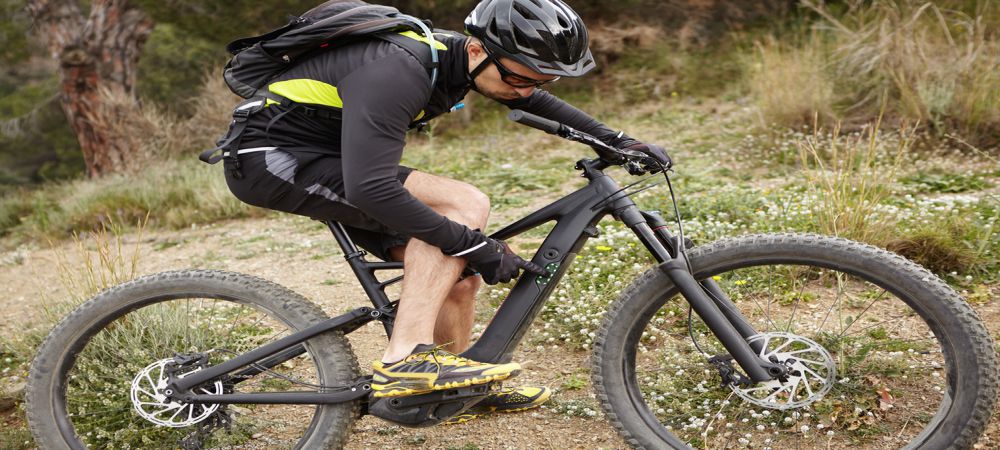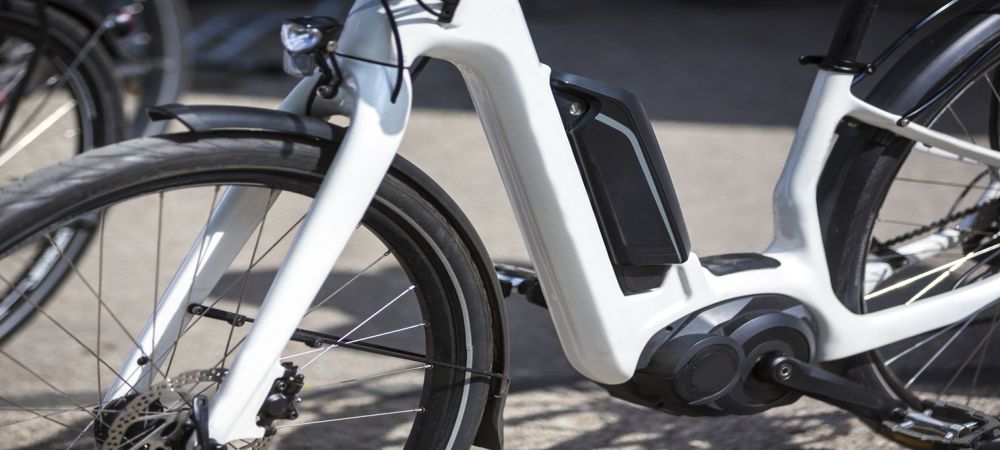For most riders looking for a powerful boost from their ebike, they tend to think about the motor. While the motor is definitely an important part of what puts the ‘e’ in your e-bike, the battery might determine performance even more. Your battery will tell you how much power you can store, how quickly energy can be transferred, and how long you can ride your ebike with max pedal-assist on.
Here we’ll look at important ebike battery terminology and types of batteries that are best for your e-bike.
Understanding Ebike Battery Terminology
Unless you are already experienced with buying bike batteries or you work in a technical field that deals with energy, there are likely some battery related terms that need an explanation.
For example, to be considered a street-legal ebike, your bike should have a battery motor output of no more than 500 watts of power. But what do 500 watts mean for speed, pedal-assist capabilities, and capacity? For that matter, what are watt-hours? Volts? Amps?

Here we will give straightforward explanations of these terms to help you understand the role each plays in how your battery functions:
Amp (A): An amp is what we measure electricity in. In terms of a battery, amps indicate the amount of electricity flowing through the battery.
Volt (V): A volt is what we measure electromotive force in. Electromotive force, simply put, is a transfer of energy. Volts push amps through the system. The more volts your battery has, the faster it can transfer energy. With a higher voltage, you will be able to experience a quicker start at the get-go but your battery can also deplete more quickly when maintaining that speed.
Watt (W): Watts are a measure of power, which is the amount of energy that can be transferred in a given unit of time. We find this number by multiplying Volts times Amps. For example, if you have a 48V 10A battery then it can generate 480 watts.
Amp – Hours (Ah): Ah shows us the amount of current that your battery can transfer in an hour. For example, our Magnum Metro+ Low Step comes with a high-performance 48V, 13Ah battery. This means that the battery can provide 13 amps of power for one hour or 6.5 amps per hour for two.
Watt-Hours (Wh): Watt-hours is where battery knowledge really starts to come together. Wh is found by multiplying Volts X Amp-Hours. This measure indicates how many watts can be transferred in a single hour. For our 48V 13Ah battery, we get 648Wh.
The Metro+ also comes with a 500W motor. To determine how long you can operate your bike at maximum pedal-assist mode, you simply divide your 648Wh by 500W. When we do this, we see we can get around one hour and 20 minutes of riding time using the bike’s max assist mode. However, if we use half the assistance, we double that to 2 hours and 40 minutes of riding time.

Bringing the Numbers Together
Let’s say we have two batteries with the following ratings:
Battery A) 10Ah X 48V = 480Wh
Battery B) 15Ah X 32V = 480Wh
They have the same Wh rating so we should expect them to perform similarly, right? Yes and no. Remember Ah is a measure of the battery’s capacity. This means that battery B has a higher capacity but bike A has more volts which is a measure of how fast energy can be transferred. Therefore, bike A can give you that nice, fast boost of speed because it can transfer energy more quickly. However, bike B will give you a longer sustained riding time.
Technically, you could use bike A’s energy more sparingly and get a similar riding time as bike B, but you would be missing out on the best part of a high-performance ebike. Another way to look at it is that bike A can be used for a sprint or a marathon while bike B is really only good for a marathon since it can not give a fast boost of speed.
Pros and Cons of Types of Batteries for Your Ebike
Here we will take a brief look at the 4 main types of ebike batteries. However, lithium-ion has become the go-to choice in the industry. When choosing the right battery for your bike, you will likely be choosing between different types of lithium-ion batteries while also taking volts, amps, watts etc. into consideration.
Lead Acid
While lead-acid batteries can be useful in certain devices that do not require much power output, they typically do not work well for an ebike. Along with having poor power output, they are also extremely heavy. Additional weight on an ebike can drain your battery faster and affect performance. The only real advantage of this type of battery is that it is extremely cheap compared to other types but it will also wear out faster./
Nickel-cadmium
Nickel-cadmium is more durable, has greater capacity, and is lighter than lead-acid. However, it still cannot outperform a lithium battery, drains quickly and, more importantly, cadmium has been found to have detrimental effects on the environment. If you can even find this type of battery, avoid it.
Nickel-metal Hydrid

Nickel-metal offers some improvements over the two previous battery types but they are also being phased out of the industry due to significant issues. Like nickel-cadmium, the hybrid has a high rate of self-discharge meaning it will lose its charge even when you are not using it. They are also more expensive without offering much additional benefit.
Lithium-ion
Lithium-ion batteries offer an improvement in nearly all aspects compared to the above examples. They weigh less, perform better, have superior capacity, and hold their charge more easily. However, that does not mean they are not without their issues. Certain safety measures and electrical components must be built-in to ensure the batteries do not overheat.
This downside can be easily managed when you follow the manufacturer’s guidelines for charging and storage. You should also not attempt modifying your bike or battery to achieve greater than recommended speeds.
There are 3 types of lithium batteries for ebikes: Lithium Manganese batteries (LiMg204), Lithium Cobalt batteries (LCo), Lithium-ion Polymer Batteries (Li-pol). The LiMg204 typically has the greatest longevity making its higher price tag worth it as you will not have to replace it as often.
The LCo is a slightly older technology that still works well though it may not last as long as the LiMg204. Finally, the Li-Pol has the unique advantage of not requiring any liquid which makes it more stable than other lithium batteries.
Why Quality Counts
When choosing an ebike battery, this is a situation where you do not want to settle for the cheapest options. While there are decent economy batteries to be found, a higher quality battery is likely to cost you less over time.
Typically, when an ebike battery is cheaper it means that it is made of cheaper components that are not rated for as many cycles. A cheap, off-brand battery is more likely to start malfunctioning sooner by not holding a charge as long, not reaching full capacity, or outright expiring. As batteries are the most costly and vital part of your bike, you will get more value by investing in a higher quality model.
Help Finding the Right Battery for Your Ebike
Still not sure what the right battery for your ebike is? The Epic Cycles team are dedicated ebike riders who can offer advice and recommendations based on your riding personal preferences. Browse our selection of ebike batteries or contact us at 416-305-2111.




















